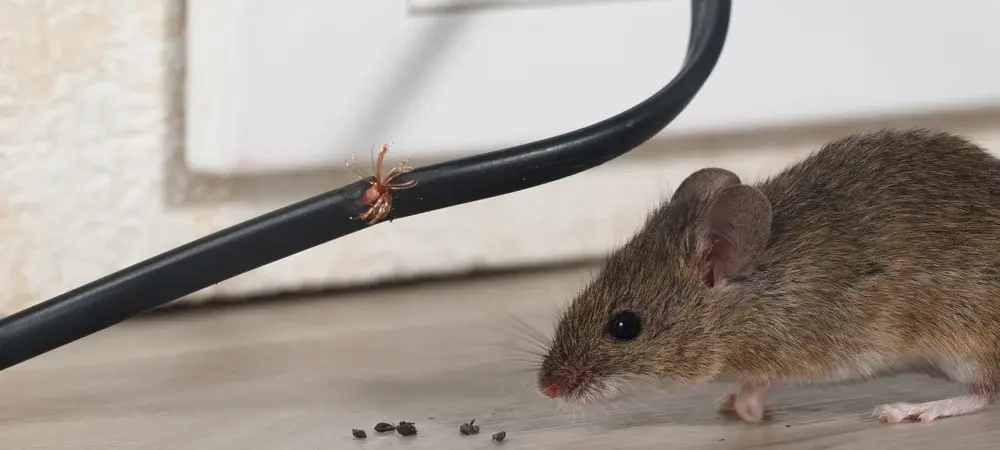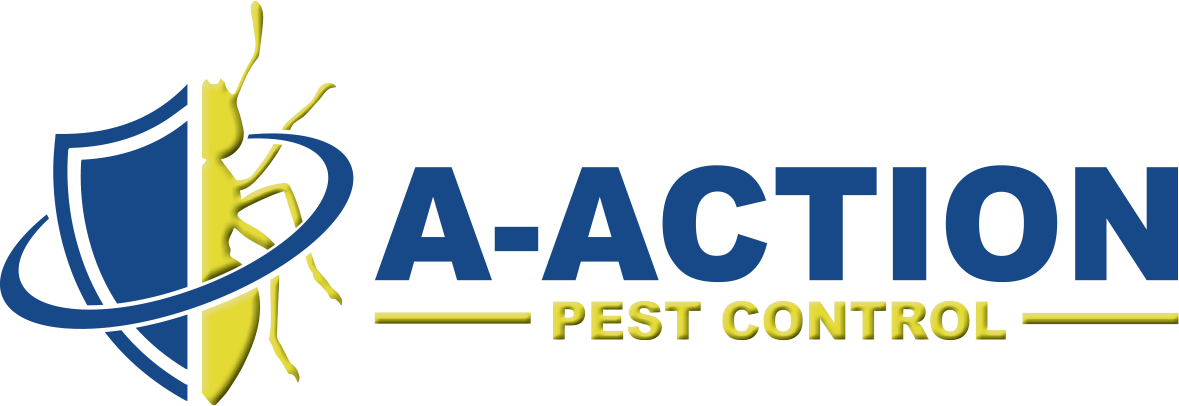What Do Mouse Nests Look Like?

Mice are common pests in Illinois and Wisconsin, especially as the temperatures drop and they seek warmth indoors. One of the telltale signs of an infestation is the discovery of a mouse nest. Knowing what to look for can help you identify and address a mouse problem early before it becomes a larger issue.
What Does a Mouse Nest Look Like?
Mouse nests are intricate, practical structures that offer warmth and protection for mice and their offspring. To help you identify one, let’s dive into the details:
Materials Used
Mice are resourceful creatures, gathering soft, pliable materials to construct their nests. They’ll use:
- Paper Products: Shredded newspapers, cardboard, or junk mail.
- Fabric: Torn pieces of cloth from furniture, stored clothing, or rugs.
- Insulation: Pulled from walls, attics, or appliances.
- Organic Matter: Dried leaves, grass clippings, or small twigs brought in from outdoors.
- Household Items: String, foam, or even plastic materials.
In Illinois and Wisconsin homes, especially those with basements or outdoor storage, mice may integrate seasonal materials like dried corn husks or straw from nearby farmlands.
Shape and Size
Mouse nests typically resemble a small, compact sphere or dome. They are loosely constructed yet surprisingly sturdy.
- Dimensions: About 4-6 inches in diameter, depending on the mouse species and the availability of materials.
- Design: The inner portion of the nest is softer and more insulated to cradle baby mice (called pups). The outer layer is often coarser and used as a barrier against predators or environmental changes.
Where to Look
Mice strategically place their nests in dark, quiet, and secure areas with easy access to food and water. Typical spots in Illinois and Wisconsin homes include:
- Inside Walls: Mice can chew through drywall and build nests in the voids.
- Attics: Particularly near insulation.
- Under Kitchen Appliances: Like stoves, refrigerators, and dishwashers.
- Basements and Crawl Spaces: Especially if they’re cluttered or poorly lit.
- Storage Boxes: Cardboard boxes filled with papers or clothes make perfect nesting spots.
- Garages: In corners or among tools and stored items.
- Yard Areas: Outdoor sheds, woodpiles, or compost bins can also house nests, especially in transitional months like spring or fall.
Signs Around the Nest
The area around a mouse nest often reveals clues about the infestation:
- Droppings: Small, dark pellets scattered nearby.
- Gnaw Marks: On food packaging, wood, or wiring.
- Odor: A strong, musky ammonia-like smell from mouse urine.
- Scattered Materials: Bits of shredded paper or fabric that didn’t make it into the nest.
- Noise: Scratching or scurrying sounds, especially at night, may point to active nesting areas.
Why Are Mouse Nests a Problem?
Mouse nests may seem like harmless piles of debris, but they pose significant risks to Illinois and Wisconsin homeowners. Here’s why:
- Health Hazards: Nests harbor bacteria, viruses, and allergens that can spread diseases like hantavirus and salmonella.
- Infestation Growth: A nest is a breeding ground for mice, with each litter producing 5-12 pups, rapidly expanding the infestation.
- Contaminated Food: Mice often build nests near food sources, leaving droppings and urine that can taint stored food and kitchen areas.
- Structural Damage: Mice use materials like insulation, wiring, and furniture stuffing to build nests, causing costly damage to your home.
- Allergy and Asthma Triggers: Nest debris, fur, and droppings can release allergens that worsen respiratory conditions.
- Fire Risk: Nests near electrical wiring increase the risk of shorts and fires, especially in walls and attics.
Addressing nests quickly is essential to stop mice from causing more harm to your home and family.

Seasonal Considerations for Homeowners in Illinois and Wisconsin
- Fall and Winter: These are peak seasons for mice entering homes, seeking shelter from the cold. As temperatures drop, check garages, attics, and basements for signs of activity.
- Agricultural Influence: With a mix of urban and rural areas, Wisconsin and Illinois homes near fields or barns are particularly at risk as mice migrate from outdoor shelters.
- Snow and Ice: Heavy snowfall can push mice indoors, especially in regions like southern Wisconsin or northern Illinois where winters are harsh.
What to Do If You Find a Mouse Nest
Discovering a mouse nest in your home can be alarming, but acting quickly and carefully is essential to resolving the problem. Mice are more than just a nuisance—they can cause damage to your property and pose health risks to your family. Here's how to handle the situation, step by step, with expert advice tailored for Illinois and Wisconsin homeowners.
1. Do Not Disturb the Nest
As tempting as it may be to remove the nest yourself, disturbing it can make the problem worse. Mice are quick to scatter when their nesting area is disrupted, potentially spreading the infestation to other parts of your home. Additionally, mouse nests often harbor bacteria and pathogens that can be harmful if not handled correctly.
2. Protect Yourself and Your Family
Mouse nests can contain harmful bacteria, viruses, and allergens, including hantavirus and salmonella. If you need to inspect the nest before a professional arrives:
- Wear gloves and a mask to reduce exposure to droppings, urine, and debris.
- Avoid vacuuming or sweeping near the nest, as this can release particles into the air.
3. Contact A-Action Pest Control
For residents of Illinois and Wisconsin, A-Action Pest Control is your trusted partner in rodent removal and prevention. With 37 years of experience and expertise in handling mouse infestations, A-Action offers fast, effective, and safe solutions to remove nests and prevent future problems.
Here’s why A-Action Pest Control is the right choice:
- Local Expertise: We understand the unique pest control challenges in Illinois and Wisconsin, from rural farmland issues to urban infestations.
- Comprehensive Solutions: The exterminators at A-Action Pest Control don’t just remove the nest—we’ll conduct a thorough inspection to locate entry points, food sources, and additional nests.
- Safe Removal: Our trained technicians use industry-approved methods to safely remove nests, ensuring the health and safety of your family.
- Prevention Strategies: A-Action will help seal entry points, set up monitoring systems, and provide tips to keep mice from returning.
4. Clean and Disinfect the Area
Once A-Action Pest Control has removed the nest and eliminated the infestation, it’s essential to clean and disinfect the area properly.
- Wear gloves and a mask during cleanup.
- Use a disinfectant to wipe down surfaces and remove any traces of droppings or urine.
- Wash any contaminated items, like clothing or bedding, in hot water.
5. Take Preventative Steps
To avoid future infestations, work with A-Action Pest Control to implement a long-term prevention plan:
- Seal gaps and cracks around your home.
- Reduce clutter to eliminate potential nesting sites.
- Store food, including pet food, in airtight containers.
- Schedule regular pest inspections to catch issues early.
Why Choose A-Action Pest Control?
Mice are persistent pests, but with the right help, you can reclaim your home. A-Action Pest Control’s proven methods and dedication to customer satisfaction make them the top choice for Illinois and Wisconsin homeowners. From inspection to prevention, they handle everything with care and professionalism.
If you’ve found a mouse nest, don’t wait—call A-Action Pest Control today and let their experts take care of the problem. They’ll ensure your home is mouse-free and protected for the future.

